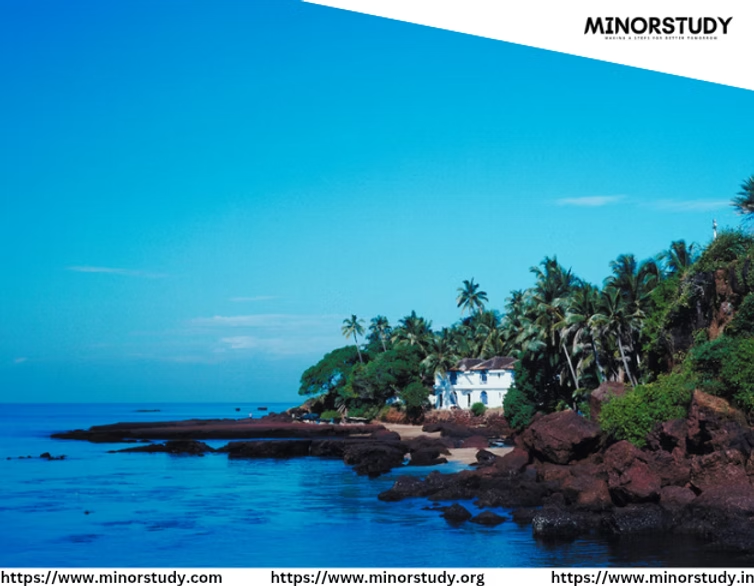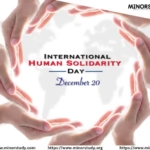Goa Liberation Day: A Bold Chapter of India’s Post-Independence Struggle
Goa Liberation Day is a powerful reminder that freedom is not always granted—it must often be fought for and earned. Celebrated every year on December 19, it commemorates the day in 1961 when the Indian Armed Forces liberated Goa from over 450 years of Portuguese colonial rule. While India gained independence in 1947, Goa’s freedom came 14 years later—making this day both emotionally charged and historically critical.
- 🌟 History of Goa Liberation Day
- 📅 Timeline of Events: Goa’s Road to Liberation
- 🎯 Top 10 Powerful Facts About Goa Liberation Day
- ❓ Frequently Asked Questions (FAQs)
- Q1. When is Goa Liberation Day celebrated?
- Q2. What was Operation Vijay?
- Q3. Why wasn’t Goa freed in 1947?
- Q4. Who was India’s PM during the liberation?
- Q5. Is Goa Liberation Day a public holiday?
- 💡 Significance of Goa Liberation Day
- 1. Historical Significance
- 2. Cultural Impact
- 3. Military Importance
- 4. Symbol of National Integrity
- 5. Inspiration for Youth
- 🎉 Observance and Celebrations
- 🧠 Why Goa Liberation Day Still Matters in Our Lives
- ✅ Reminds Us of the Price of Freedom
- ✅ Celebrates Plurality and Cultural Harmony
- ✅ Boosts National Pride
- ✅ Promotes Tourism and Cultural Economy
- 💬 Wishing on Goa Liberation Day
- 📌 Important Points to Remember
- 🧭 Conclusion: Why Goa Liberation Day Is Important for Society
Let’s dive deep into the history, explore powerful facts, walk through the timeline, and understand why this day still matters deeply to our daily lives and Indian identity.
🌟 History of Goa Liberation Day
Goa was under Portuguese control since 1510, when Alfonso de Albuquerque seized the region for Portugal. Even after India gained independence in 1947, Portugal refused to relinquish control over Goa, Daman, and Diu. Despite diplomatic negotiations and peaceful efforts, Portugal stubbornly held on.
By 1961, patience ran out. India, under Prime Minister Jawaharlal Nehru, launched Operation Vijay (meaning “Victory”), a 36-hour military operation involving the Army, Navy, and Air Force. On December 19, 1961, Indian forces successfully liberated Goa, ending colonial rule and integrating it into the Indian Union.
📅 Timeline of Events: Goa’s Road to Liberation
| Year | Event |
|---|---|
| 1510 | Portuguese capture Goa under Afonso de Albuquerque. |
| 1947 | India gains independence; Goa remains under Portugal. |
| 1955 | Peaceful Satyagrahis try to enter Goa; many are killed or arrested. |
| 1956 | Nehru tries diplomatic pressure—Portugal refuses negotiations. |
| Dec 17, 1961 | India launches Operation Vijay. |
| Dec 19, 1961 | Goa, Daman, and Diu are liberated; Goa becomes a Union Territory. |
| 1987 | Goa is granted statehood, becoming India’s 25th state. |
🎯 Top 10 Powerful Facts About Goa Liberation Day
Goa was under foreign rule for over 450 years, far longer than the British ruled India.
India used military force for the first time post-Independence to end colonial rule in Goa.
36 hours—that’s all Operation Vijay took to liberate Goa.
The operation involved 30,000 Indian soldiers.
Over 3,000 Portuguese soldiers surrendered without heavy resistance.
Goa was the last major Indian territory to be liberated from colonial rule.
Post-liberation, Goa became a Union Territory, later gaining statehood in 1987.
The Naval aviation base INS Hansa was captured and became a crucial defense asset.
Portugal cut diplomatic ties with India and recognized Goa’s liberation only in 1974.
Goa Liberation Day is not just a local event—it’s nationally celebrated, especially in defense circles.
❓ Frequently Asked Questions (FAQs)
Q1. When is Goa Liberation Day celebrated?
A: Every year on December 19.
Q2. What was Operation Vijay?
A: It was a 36-hour military operation by India to liberate Goa from Portuguese rule.
Q3. Why wasn’t Goa freed in 1947?
A: Portugal refused to negotiate, calling Goa an integral part of Portugal, not a colony.
Q4. Who was India’s PM during the liberation?
A: Pandit Jawaharlal Nehru.
Q5. Is Goa Liberation Day a public holiday?
A: Yes, it’s a state holiday in Goa with celebrations and parades.
💡 Significance of Goa Liberation Day
1. Historical Significance
It marks the final end of European colonialism in India and underscores India’s resolve to unite all its territories—even if it took 14 years after independence.
2. Cultural Impact
Liberation helped preserve and blend Goa’s unique Indo-Portuguese culture, seen in its architecture, cuisine, and festivals.
3. Military Importance
Operation Vijay became a model for rapid military action and joint operations among the Indian Army, Navy, and Air Force.
4. Symbol of National Integrity
It emphasizes that freedom is not partial. India was not complete without Goa.
5. Inspiration for Youth
Goa Liberation Day teaches young Indians that diplomacy has limits, and sometimes, decisive action is necessary.
🎉 Observance and Celebrations
Goa celebrates Liberation Day with:
Parades by the Indian Armed Forces.
Cultural programs showcasing Goan dance, music, and heritage.
Tributes and speeches by leaders at the Azad Maidan in Panaji.
Lighting of heritage monuments and public buildings.
Schools and colleges hold essay competitions, skits, and debates about Goa’s freedom.
🧠 Why Goa Liberation Day Still Matters in Our Lives
Even in 2025, Goa Liberation Day isn’t just a date in history. It impacts us every day:
✅ Reminds Us of the Price of Freedom
Freedom isn’t free. It took courage, time, diplomacy, and war to reclaim Goa.
✅ Celebrates Plurality and Cultural Harmony
Goa’s integration enriched India’s diversity, adding its distinct language (Konkani), festivals, and heritage.
✅ Boosts National Pride
Celebrating it rekindles a sense of belonging and pride in our armed forces and democratic resolve.
✅ Promotes Tourism and Cultural Economy
The celebrations draw attention to Goa’s culture, increasing tourism, hospitality, and awareness.
💬 Wishing on Goa Liberation Day
If you’re writing or sharing wishes on social media or with loved ones, here are some meaningful Goa Liberation Day messages:
🎉 “Saluting the courage that set Goa free. Happy Goa Liberation Day!”
🕊 “Freedom delayed is not freedom denied—Goa proved that. Jai Hind!”
🇮🇳 “Let’s remember the brave hearts who made Goa a part of Mother India. Happy Liberation Day!”
💐 “On this day, let’s embrace unity, culture, and patriotism. Happy Goa Liberation Day!”
📌 Important Points to Remember
Goa’s liberation came 14 years after India’s Independence.
The military action lasted just 36 hours but changed history forever.
Goa became a state in 1987, but celebrates freedom on Dec 19 every year.
Portugal only recognized Goa’s liberation in 1974, after a revolution.
It’s a reminder of India’s commitment to national unity and sovereignty.
🧭 Conclusion: Why Goa Liberation Day Is Important for Society
Goa Liberation Day is more than a regional observance—it is a national celebration of courage, strategic decision-making, and cultural unity. It reflects the uncompromising vision of India as a free and united nation, even if it meant waiting 14 years beyond 1947.
It teaches us that:
Freedom is not instant—it’s earned with persistence.
Unity requires action—diplomacy alone doesn’t always work.
Cultural identities matter—Goa didn’t lose its charm; it became part of India’s vibrant fabric.
In our daily lives, the values of Goa Liberation Day inspire us to stand for justice, fight against inertia, and celebrate diversity. Every Indian, no matter where they live, carries a piece of Goa in their identity—because Goa’s fight was India’s fight.








